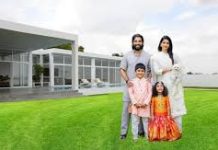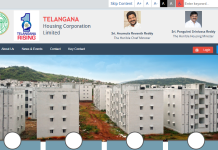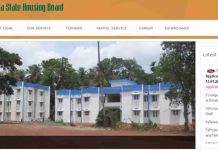Introduction:
Residential zones in Hyderabad are specifically designated areas for housing and community development. These zones are integral to urban planning, ensuring organized growth and the creation of livable neighborhoods. Understanding the different Residential zones in Hyderabad—such as R1, R2, R3, and R4.allows for better planning and development, ensuring that each area meets the needs of its residents while adhering to specific regulations. Whether it’s the bustling areas near growth corridors or the more tranquil suburban and rural zones, each residential zone has unique characteristics that make it suitable for different types of development. Master Plan In 2031
What are Residential Zones in Hyderabad?
Hyderabad residential zones are specifically designated areas for housing and community development. These zones are integral to urban planning, ensuring organized growth and the creation of livable neighborhoods. Understanding the different Residential zones in Hyderabad such as R1, R2, R3, and R4.

Key Points in Residential Zones(R1-R4):
Primary Focus on Housing: The primary purpose of these zones is to accommodate residential structures such as houses, apartments, and villas.
Height Regulations: Buildings within residential zones are subject to height restrictions to preserve the area’s character, ensure adequate sunlight, and maintain proper ventilation.
Land Use Restrictions: Commercial and industrial activities are typically limited in residential zones to maintain a peaceful, residential atmosphere.
Essential Infrastructure: These zones are equipped with essential infrastructure, including well-maintained roads, reliable water supply, and proper sanitation facilities.
Zoning Classifications: Residential zones in Hyderabad are further categorized into specific types, such as R1, R2, and R3, each with distinct regulations and development potential based on their location.
How many Residential Zones are in HMDA Hyderabad?
R1 Zones: Positioned near major growth corridors, R1 zones offer higher development potential and permit the construction of taller buildings, making them ideal for denser urban living.
R2 Zones: Located away from urban centers, R2 zones often feature a more suburban or rural setting with lower height restrictions, catering to those seeking a quieter, less dense living environment.
R3 Zones: These zones cover the remaining urban and suburban areas not classified as R1 or R2, providing flexible development options within the broader residential framework.
R4 Zones: R4 zones are used in Telangana, they might designate areas for industrial activities, such as manufacturing or warehousing.

What is the R1 Zone In Hyderabad?
R1 zones are near key growth corridors, such as the Outer Ring Road (ORR) and the upcoming Regional Ring Road (RRR). These zones generally lie within a 1 km radius beyond the ORR, positioning them strategically for future urban development.
Height Restrictions in R1 Zone:
Buildings in R1 zones can be constructed up to 16 floors or 18 meters in height without special permission. This minimal restriction on height allows for more significant vertical development compared to other residential zones.
R1 Zone Permitted and Prohibited Uses:
R1 zones primarily support residential buildings, with some allowance for commercial activities under strict regulations. For example, establishments like auditoriums, clubs, community centers, educational institutions, and banks are permitted. However, heavy industries, hazardous industries, and cremation grounds are strictly prohibited.
What is the R2 Zone In Hyderabad?
Residential zones in Hyderabad Zone 2 (R2) encompasses areas that are not adjacent to urban centers or growth corridors, thus providing a more suburban or semi-rural environment.
In R2 Zones, the construction height of buildings is regulated between 15 and 18 meters. However, the exact allowable height may vary based on the width of the adjacent roads.
The list of permitted and prohibited establishments in R2 Zones is identical to that specified for R1 Zones.

Also Read: A Full Guide to 12 Land Use Zones in HMDA Master Plan 2031
The permitted and prohibited uses for R1/R2 Zones:
| Permitted Uses in R1/R2 Zones | Prohibited Uses in R1/R2 Zones |
|---|---|
| All Kinds of Residential Buildings | All Other Uses Not Mentioned in Permitted Uses Column |
| Auditoriums | Heavy, Large & Extensive Industries |
| Bakeries & Confectioneries | Hazardous & Polluting Industries |
| Banks | Reformatory |
| Bus-Depots without Workshops | Slaughter-Houses |
| Bus-Stands | Shooting Ranges |
| Clubs, Community Centers | Solid Waste Dumping Yards |
| Computer Software & IT Enabled Services Units | Storage Go-Downs of Perishables |
| Convenience Stores & Retail Shopping Centers, Restaurants & Eateries | Hazardous & Inflammable Materials |
| Courts of Law | Storage of Gas Cylinders |
| Crematoriums/Cremation Grounds | Warehouses |
| Dharamshalas | Heavy Vehicle Workshops |
| Doctors’ Clinics & Dispensaries | Zoological Gardens |
| Educational Institutions – Schools, UG & PG Degree Colleges/Universities & Research Institutes | |
| Electricity Distribution Stations | |
| Electronic Printing Press | |
| Fire Stations & Emergency Services | |
| Indoor & Outdoor Games Facilities of Local Nature | |
| Gymnasiums | |
| Health Facilities with max. 20 beds | |
| Hostel & Boarding Accommodations | |
| International Conference Centers | |
| Library | |
| Motor Vehicles Repairing/Services Workshops or Garages | |
| Central, State & Municipal Government Offices | |
| Night Shelters | |
| Parks/Play Areas or Totlots | |
| Fuel-Filling Pumps | |
| Plant Nursery | |
| Police Check Posts | |
| Police Stations | |
| Post Offices | |
| Professional Offices | |
| Public Utility Buildings Except Storage & Service Yards | |
| Religious Premises | |
| LPG Distribution Sales & Showroom | |
| Technical Training Centres | |
| Taxi/3-wheeler/Public Transport Stands | |
| Transit Visitors Camps | |
| Water Pumping Stations | |
| Weekly & Informal Sector Markets | |
| Yoga Centres/Wellness Clinics | |
| Cinema & Function Halls on plots above 3000 sq. m. and abutting roads of minimum 18 meters width | |
| Cinema & Function Halls on plots above 3000 sq. m. and abutting road of minimum 18 meters width |

What is the R3 in Hyderabad?
Residential Zone 3 (R3) includes all urban and surrounding areas that are not designated as R1 or R2 Zones. These areas are broadly categorized under Residential Land Use without specific detailed planning at present.
In R3 Zones, the height restrictions are set at 15 meters for residential buildings and 18 meters for non-residential constructions.
Permitted and Prohibited Uses in R3 Zones
The permitted and prohibited uses in R3 Zones align with those in R1 and R2 Zones, with the addition of the following prohibitions:
Prohibited Uses in R3 Zones:
Burial/Cremation Grounds
Bus Depots
Cinema Halls
Clubs
Computer Software & IT Enabled Services Units
Electronic Printing Press
Fire Stations
Missionaries
Health Facilities with a maximum of 20 beds
Hostels & Boarding Accommodations
Hotels
Police Stations
LPG Distribution Centres
These restrictions must be followed when planning and constructing buildings within R3 Zones.
What is the R4 in Hyderabad?
Residential Zone Hyderabad (R4), which includes the Gramkantham (Govt Lands in Villages) area and a 300-meter-wide belt surrounding it (excluding Bio Conservation Zones), the following uses are permitted:
Residential Uses: Includes various types of residential developments.
Non-Residential Activities: Certain non-residential uses are allowed, subject to specific regulations.
The maximum height allowed for buildings in R4 Zones is 10 meters for both residential and non-residential activities.
Also Read: What to Check Before Buying a Plot in an HMDA Project?
Permitted and Prohibited Uses in Residential zones in Hyderabad (R1, R2, R3, R4)
| Permitted Uses | Prohibited Uses |
|---|---|
| R1 & R2 Zones | |
| All Kinds of Residential Buildings | All Other Uses Not Mentioned in Permitted Uses Column |
| Auditoriums | Heavy, Large & Extensive Industries |
| Bakeries & Confectioneries | Hazardous & Polluting Industries |
| Banks | Reformatory |
| Bus-Depots without Workshops | Slaughter-Houses |
| Bus-Stands | Shooting Ranges |
| Clubs, Community Centers | Solid Waste Dumping Yards |
| Computer Software & IT Enabled Services Units | Hazardous & Inflammable Materials |
| Convenience Stores & Retail Shopping Centers, Restaurants & Eateries | Electronic Printing Press |
| Courts of Law | Storage of Gas Cylinders |
| Crematoriums/Cremation Grounds | Warehouses |
| Dharamshalas | Heavy Vehicle Workshops |
| Doctors’ Clinics & Dispensaries | Zoological Gardens |
| Educational Institutions – Schools, UG & PG Degree Colleges/Universities & Research Institutes | Electricity Distribution Stations |
| Health Facilities with max. 20 beds | Indoor & Outdoor Games Facilities of Local Nature |
| Gymnasiums | International Conference Centers |
| Hostels & Boarding Accommodations | Library |
| Cinema & Function Halls on plots above 3000 sq. m. and abutting roads of minimum 18 meters width | Motor Vehicles Repairing/Services Workshops or Garages |
| Library | Night Shelters |
| Parks/Play Areas or Totlots | Plant Nursery |
| Fuel-Filling Pumps | Police Check Posts |
| Police Stations | Police Stations |
| Post Offices | Professional Offices |
| Public Utility Buildings Except Storage & Service Yards | Taxi/3-wheeler/Public Transport Stands |
| Religious Premises | Transit Visitors Camps |
| LPG Distribution Sales & Showroom | Water Pumping Stations |
| Technical Training Centres | Yoga Centres/Wellness Clinics |
| Weekly & Informal Sector Markets | Cinema & Function Halls on plots above 3000 sq. m. and abutting roads of minimum 18 meters width |
| Cinema & Function Halls on plots above 3000 sq. m. and abutting roads of minimum 18 meters width | Hotels on plots of above 2000 sq. m. and the abutting road of minimum width of 18 meters |
| R3 Zones | |
| All Kinds of Residential Buildings | Burial/Cremation Grounds |
| Auditoriums | Bus Depots |
| Bakeries & Confectioneries | Cinema Halls |
| Banks | Clubs |
| Bus-Depots without Workshops | Computer Software & IT Enabled Services Units |
| Bus-Stands | Electronic Printing Press |
| Clubs, Community Centers | Fire Stations |
| Computer Software & IT Enabled Services Units | Missionaries |
| Convenience Stores & Retail Shopping Centers, Restaurants & Eateries | Health Facilities with max. 20 beds |
| Courts of Law | Hostels & Boarding Accommodations |
| Crematoriums/Cremation Grounds | Hotels |
| Dharamshala | Police Stations |
| Doctors’ Clinics & Dispensaries | LPG Distribution Centres |
| Educational Institutions – Schools, UG & PG Degree Colleges/Universities & Research Institutes | |
| Health Facilities with max. 20 beds | |
| Gymnasiums | |
| Hostels & Boarding Accommodations | |
| Cinema & Function Halls on plots above 3000 sq. m. and abutting roads of minimum 18 meters width | |
| Library | |
| Parks/Play Areas or Totlots | |
| Fuel-Filling Pumps | |
| Police Stations | |
| Post Offices | |
| Public Utility Buildings Except Storage & Service Yards | |
| Religious Premises | |
| LPG Distribution Sales & Showroom | |
| Technical Training Centres | |
| Weekly & Informal Sector Markets | |
| Storage of Crops, Fodder, Manure, Agricultural Implements, and Similar Needs | |
| R4 Zones | |
| All Kinds of Residential Buildings | All Other Uses Not Mentioned in Permitted Uses Column |
| Banks | Heavy Industries |
| Bus Stands | Hazardous Industries |
| Clinics, Dispensaries, Primary Health Sub-Centers | Slaughter-Houses |
| Community Centers and Social Institutions | |
| Customary Home Occupation/Household Units | |
| Municipal, State, and Central Government Offices | |
| Parks and Playgrounds | |
| Professional Offices/Personal Services Establishments | |
| Public Utilities and Buildings (except service and storage yards) | |
| Religious Places | |
| Restaurants/Eating Places | |
| Retail Shops | |
| Repair Service Establishments | |
| Schools | |
| Stables for Domestic Animals (limit of 5 animals per plot) | |
| Storage of Crop, Fodder, Manure, Agricultural Implements, and Similar Needs |
Also Read: HMDA Rules and Regulations: Zoning Laws & Approval Processes
Conclusion:
Understanding the different Residential zones in Hyderabad (R1, R2, R3, and R4) in Telangana is essential for effective urban planning and development. Each zone has unique characteristics and regulations tailored to its location and development potential, from the bustling R1 zones near growth corridors to the more serene R2 and R3 zones. These zones play a crucial role in creating organized, livable communities and ensuring that urban growth is managed sustainably. By adhering to the specific guidelines for each zone, developers and residents can contribute to well-planned and harmonious urban environments.
Frequently Asked Questions:
Residential buildings, banks, bus stands, clinics, community centers, government offices, parks, professional offices, public utilities, religious places, restaurants, retail shops, repair services, schools, and more.
Heavy industries, hazardous industries, cremation grounds, and various other establishments as listed in the regulations.
R1 Zones: Buildings can be constructed up to 16 floors or 18 meters.
R2 Zones: The construction height ranges between 15 to 18 meters, depending on the width of the adjacent roads.
R3 Zones encompass all urban and suburban areas not classified as R1 or R2. The height restriction is 15 meters for residential and 18 meters for non-residential buildings.
Prohibited uses in R3 Zones include burial/cremation grounds, bus depots, cinema halls, clubs, computer software & IT service units, electronic printing presses, fire stations, health facilities with up to 20 beds, and others.
Permitted Uses: Residential buildings, various non-residential activities, and essential infrastructure.
Height Restrictions: The maximum height for buildings in R4 Zones is 10 meters for both residential and non-residential structures.
Suggested Articles
A Full Guide to 12 Land Use Zones in HMDA Master Plan 2031
What to Check Before Buying a Plot in an HMDA Project?
HMDA Rules and Regulations: Zoning Laws & Approval Processes



































